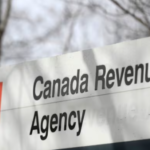
Coronavirus disease 2019 (COVID-19) is a respiratory illness that can spread from person to person. The virus that causes COVID-19 is a novel coronavirus that was first identified during an investigation into an outbreak in Wuhan, China. This illness has a high mortality rate, and is easily transmitted, causing many local and state governments to shut down areas that have concentrated populations – that means events, schools, restaurants and bars. Governor Charlie Baker on Sunday night ordered all public and private schools across Massachusetts to close for three weeks, and, beginning Tuesday, has limited all restaurants to only takeout and/or delivery. The motivation here is to create “social distancing” that will help flatten the curve of the exponential growth of COVID-19 cases. If the number of cases grows too fast, we risk overwhelming our healthcare system and causing a situation similar to Italy, where doctors have had to start triaging the sick, picking who lives and dies, similar to what happens on a battlefield.
Impact on the restaurant industry
OpenTable, the restaurant booking system has released regional data by country, state and even city, in order to help restaurants understand the downward trend that entrepreneurs are facing. The numbers are disturbing:
Of course, urban areas have been hit the hardest, with cities like San Francisco seeing drops of over 70% on Sunday. These numbers, combined with the upcoming forced closures, means that the hospitality industry, and its vendors must face the reality that their businesses will likely be forced to close within days of this post. The duration of these closures is not entirely known, but we can look at flu epidemics and school closures as the best analogy to our current situation. The hard truth is that we could be looking at a span of months.
Cash flow: Cash is king
So obviously, the next question is, “How on earth am I going to survive this?” To be honest, it isn’t going to be easy. Without getting all “Chicken Little,” we’re looking at a lot of restaurants closing their doors permanently. The next few weeks will be critical in determining the future of the restaurant industry. We have put together a cash flow worksheet specifically for restaurants. Feel free to take a look and download a copy here. Here’s a video on how to use the spreadsheet.
Financing options
Based on how the worksheet above went, you may want to look into getting financing to get you through next few weeks or months. There are a number of different options available to you.
-
Commercial Line of Credit: A good option for businesses that have not already been experiencing cash flow issues. The federal reserve just lowered the interest rate to 0%, so now is actually a great time to get a line of credit, especially if you can get an allusive fixed rate LOC. Alternatively, you can just get a term loan which will likely be fixed, but you won’t be able to draw more funds from the loan, or increase the balance.
-
Small Business Administration: The SBA is now offering low-interest federal loans to small businesses in designated states and territories impacted by COVID-19. The loan offers up to $2 million in assistance, with interest rates of 3.75% and repayment terms up to 30 years. You do need to be in a designated disaster area to apply, but if you are you’ll be claiming Economic Injury (EIDL), here is some more information. Application and disaster areas here.
-
Credit Card: While I would not put all debt on your credit card, it might be worthwhile to move some expenses to your credit card. This effectively increases your terms by another 30 days. Know that the interest rate is much higher than the SBA loan or LOC.
-
Massachusetts Small Business Recovery Loan Fund: will provide emergency capital up to $75,000 to Massachusetts-based businesses impacted by COVID-19 with under 50 full- and part-time employees, including nonprofits. Loans are immediately available to eligible businesses with no payments due for the first 6 months. Massachusetts Growth Capital Corporation (MGCC) has capitalized the fund and will administer it.
-
How to Apply: Please complete the application found on MGCC’s website: EmpoweringSmallBusiness.org.
-
Completed applications can be sent via email to mgcc@massgcc.com with the subject line “2020 Small Business Recovery Loan Fund”
-
Alternative sources of revenue
With the inevitable shuttering of dine in restaurants, entrepreneurs are looking for alternative revenue streams in order to stay afloat, and keep employees on payroll. Canlis, a Seattle restaurant, has already responded, closing their dining room down, and bringing three new concepts into the space to conform to societal needs. We’ll have a follow up post on take out and delivery systems in the next couple of days.
Cutting fixed costs
Currently, everyone is aware of the present issues that are facing businesses that are open to the public, including landlords and banks. If you have a landlord, one of the first things you want to get out of the way is negotiating a lower rent, or adding the rent to the end of your lease, at the higher lease amount. A smart landlord will take you up on this, as they would rather keep you in place rather than seek out a new tenant.
For banking, you have a similar mechanism called forbearance. Your mortgage servicer (the bank) would agree to temporarily reduce or suspend your monthly mortgage payment for a set amount of time. Once the forbearance period ends, you’ll repay the total amount that was reduced or suspended. Similarly to a smart tenant, a bank would rather just waive a couple months of rent, rather than go through a costly foreclosure.
Additionally, you can reach out to utility companies to set up a payment plan for the next few months, which can give you a little more wiggle room.
Helping employees
One of the elements of this economic collapse is the devastating effect it will have on employees. As you already know, most employees live paycheck to paycheck. 49% of America, in fact, live paycheck to paycheck. These next couple of weeks are critically important in the well being of employees, and determining whether they come back after COVID-19. There is a balancing act that we, as business owners, need to play in order to help employees without bankrupting your business.
Here’s a little trick. If you’re planning on closing your business, taking your food inventory, these goods will likely end up being spoilage, which you can submit an insurance claim for and be reimbursed for the loss. In the meantime, that food has to go somewhere doesn’t it?
Unemployment insurance
As new information is released we will be working around the clock to keep you as up to date as possible. Below is some information regarding applying for unemployment that you can pass along you your employees.
The state has waived the one-week wait period during this crisis so employee’s benefits will start with their last day of service. Employees can now collect unemployment for the following circumstances:
-
The workplace is shut down and expects to reopen in four or fewer weeks. Workers must remain in contact with their employer and be available for any work their employer may have for them that they are able to do, but do not otherwise need to be looking for work.
-
An employer may extend the period of the shut-down to eight weeks, and the employees will remain eligible for the longer period under the same conditions described above.
-
The Department of Unemployment Assistance (DUA) may extend these timelines even longer based on the unfolding of events.
Employees can apply on-line, http://www.mass.gov/dua or by phone, Call the TeleClaim Center toll-free at 877-626-6800.
Benefits are calculated by averaging wages for the last 4 quarters of earnings and taking a percentage typically at 50% and has a cap of $823.00 per week. Most claims are processed within 21-28 days after filing. It may take longer if there is an issue with your claim. The DUA is currently working to expedite this process, but nothing firm has been stated about the reduced timeframe.
We’re also looking into g Employers who are impacted by COVID-19 may request up to a 60-day grace period to file quarterly reports and pay contributions.
Available paid time off
Provide your employees with an update to the amount of time off they have accrued. Many employees will want to use whatever they have accrued in order to avoid going without a paycheck, but with this desire there needs to be compliance and consistency.
Employees can use Sick Time can be used if available and meets the following criteria:
-
They are diagnosed with or have been ordered to quarantine due to potential exposure
-
You are caring for a family member who has been diagnosed
You can also modify your Sick Time policy for this timeframe to include use of sick time to care for a child where there is an extended school closing. Employees can also use their vacation time, if your company has that available to them.
Health insurance
In terms of health insurance, there are two ways in which you can handle extending benefits to employees. If you are planning on bringing back employees within a short period of time, you can elect to keep employees on your current policy. If not, well then COBRA it is.
-
Keeping employees on current policy: For employees who participate in a Group Health Insurance program, employees will be responsible for submitting a monthly check to cover their share of the premium. If staff that are on insurance, as long as you do not submit a termination date via Gusto, they will remain on the group health plan.
-
COBRA/MassHealth: If you lay off employees, However, you enter a termination date in Gusto and it will trigger Gusto to submit a COBRA request and a request to terminate benefits. This allows employees continued access to COBRA benefits.
Relief in the works
The pending federal legislation proposes further relief including additional money for unemployment benefits, and relief to employers for charges related to unemployment benefits paid due to COVID-19.
There is Federal legislation that has passed the House and is now under consideration by the Senate that may provide additional Emergency Paid Sick Time. This benefit is not available until the Senate also passes the bill. As currently written, it would provide 80 hours paid time for a Full-time Employee and hours for a Part-time employee based on an average of their variable hours over the past six (6) months.
The bill contains a section that would provide Paid Sick Time that includes caring for a child, whose school or care facility has closed. This would separate sick time from the MA Earned Sick Time. However, it has not passed the Senate yet and may be changed before it is finally enacted as law.
Editor’s note: This article was originally posted here.




